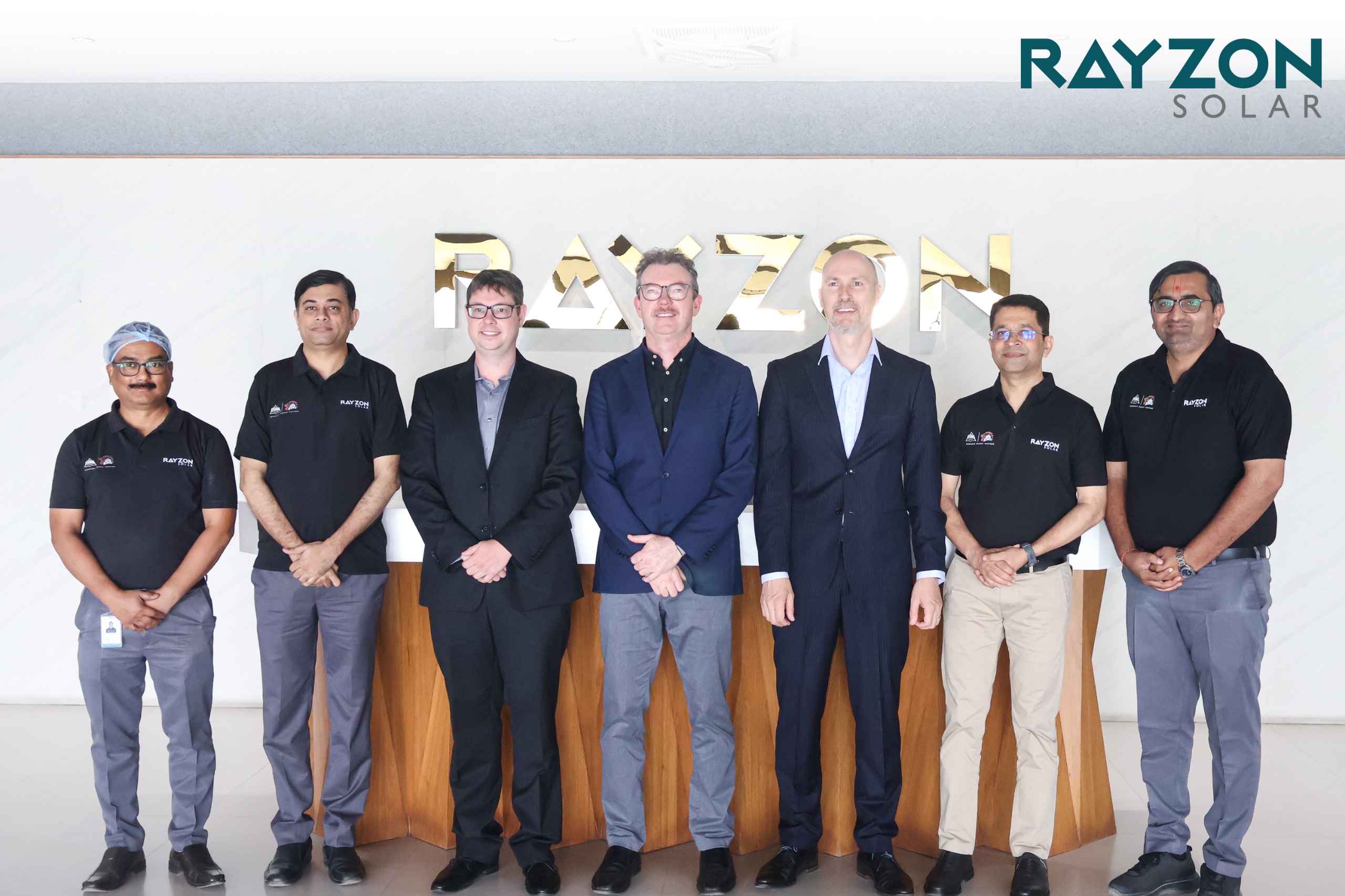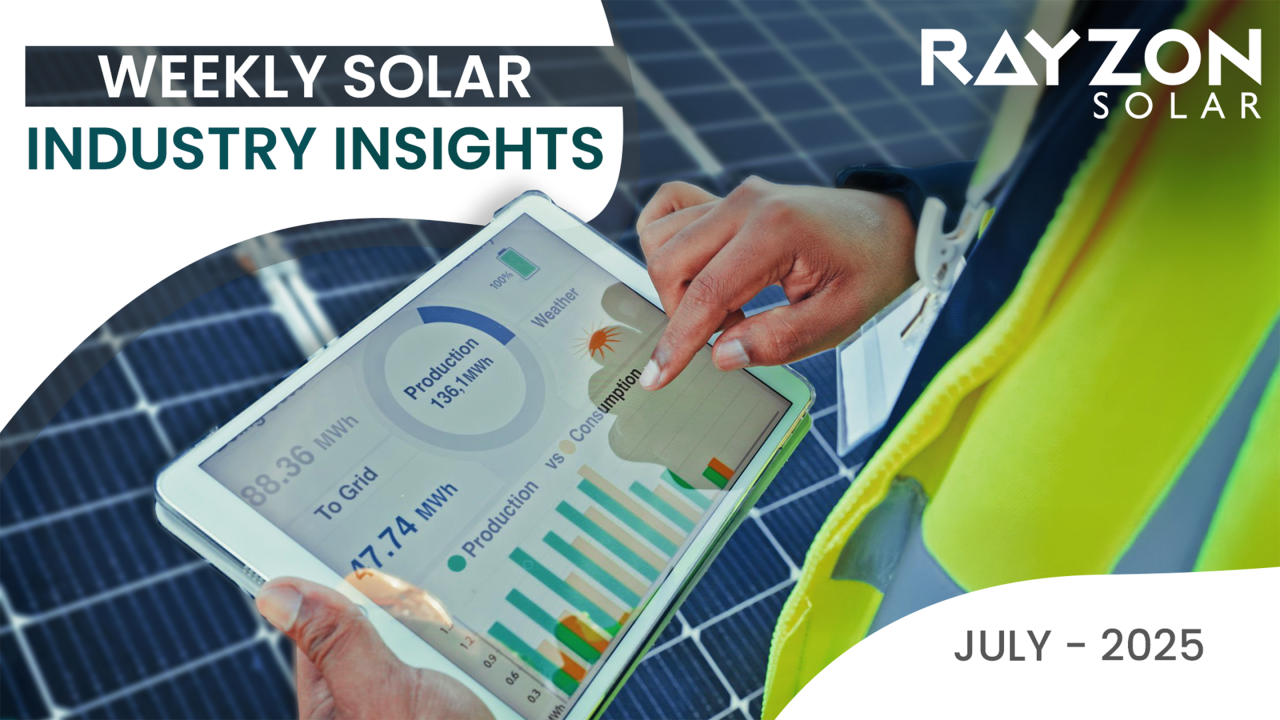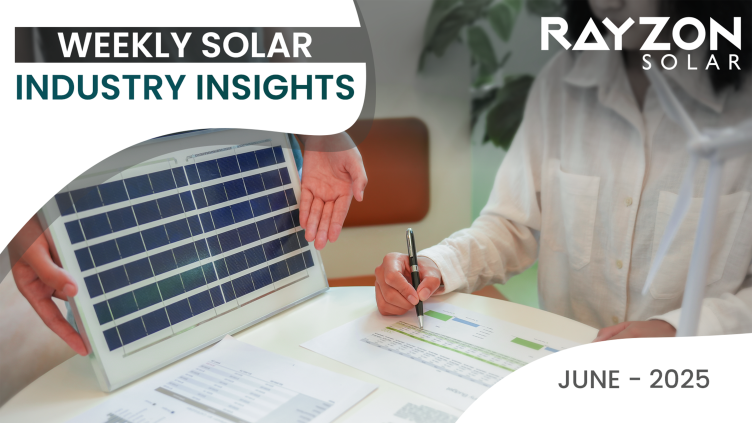
Weekly Solar Industry Insights: February 10th – February 16th, 2025
China’s Solar Panel Exports Surge in 2024, Growth Across Key Markets
China's solar panel exports surged by 13% in 2024, reaching 235.93 GW. While Europe saw a 7% decline, other regions experienced significant growth. The Middle East grew by 99% to 28.79 GW, led by Saudi Arabia, while Africa's imports rose by 43%, with South Africa at the forefront. The Asia-Pacific region grew 26%, with India and Pakistan each contributing 25%. The Americas saw a 10% increase, led by Brazil. Global solar demand is expected to rise by 4-9% in 2025, with Europe, India, and Brazil as key markets.
Global Utility-Scale Solar Additions Reach 182 GW in 2024
In 2024, global utility-scale solar installations reached 182.7 GW, with the top 33 countries accounting for 765 GW, or 93% of the total. Asia led growth, driven by China and India, while the US nearly doubled its installations. Spain and Italy boosted Europe's solar recovery, and Brazil surpassed Chile in South America.
Global Module Prices Stable Amid Mixed Market Sentiments
Global PV module prices remained stable with slight fluctuations. Chinese module prices for TOPCon and Mono PERC modules dropped 1.12%, settling at $0.084/W, with prices ranging from $0.080-0.088/W. Europe saw minor increases for 450W modules, averaging €0.101/W, while U.S. prices for TOPCon modules held steady at $0.279/W. Experts predict a price rise for second-half 2025 TOPCon modules due to higher raw material costs and anticipate module price increases starting in March amid global trade and material cost uncertainties.
Global Solar and Battery Storage LCOE Expected to Decline in 2025
A report predicts a decline in the levelized cost of electricity (LCOE) for grid-scale solar and battery storage in 2025. Utility-scale solar LCOE is expected to drop 2% from $36 per MWh to $35 per MWh, with a 31% decrease to $25 per MWh by 2035. Battery storage LCOE is forecasted to fall 11% from $104 per MWh in 2024 to $93 per MWh in 2025, reaching $53 per MWh by 2035. Despite trade barriers, clean energy costs are expected to decline by 22% to 49% by 2035, fueled by China’s affordable green tech exports.
PM Surya Ghar: Muft Bijli Yojana – Transforming India’s Energy Landscape
PM Surya Ghar: Muft Bijli Yojana aims to provide solar power to 1 crore households by 2027. The world’s largest domestic rooftop solar initiative has already benefitted 8.46 lakh households, offering up to 40% subsidies and collateral-free loans. With projections to add 30 GW of solar capacity, cut CO2 emissions by 720 million tonnes, and create 17 lakh jobs, the scheme is driving India’s transition to renewable energy. The "Model Solar Village" initiative is also empowering rural communities toward energy self-reliance, reshaping India’s energy future.
India’s Solar Module Exports Reach $782 Million in FY 2024-25 (April-November)
India's solar module exports reached $782 million in FY 2024-25 (April-November), with $756.08 million sent to the USA. India's share of the USA's solar PV imports has grown from 2.2% in 2021 to 9% in 2023. In FY 2023-24, India exported $1.97 billion in solar modules, with the USA receiving $1.94 billion. Government initiatives like the PLI Scheme are boosting the competitiveness of Indian solar manufacturers globally. Additionally, India exported $27.32 million in solar cells in FY 2024-25, with $25.09 million going to the USA.
German Researchers Achieve 24.6% Efficiency in CIGS-Perovskite Tandem Solar Cell
Helmholtz-Zentrum Berlin and Humboldt University researchers have achieved a 24.6% efficiency using a tandem solar cell combining copper indium gallium selenide (CIGS) with perovskite. The Fraunhofer Institute for Solar Energy Systems certified this result. The innovative combination of CIGS and perovskite offers high efficiency potential with a lower environmental footprint, and researchers believe future cells may exceed 30% efficiency.
Information Source: PV Magazine




